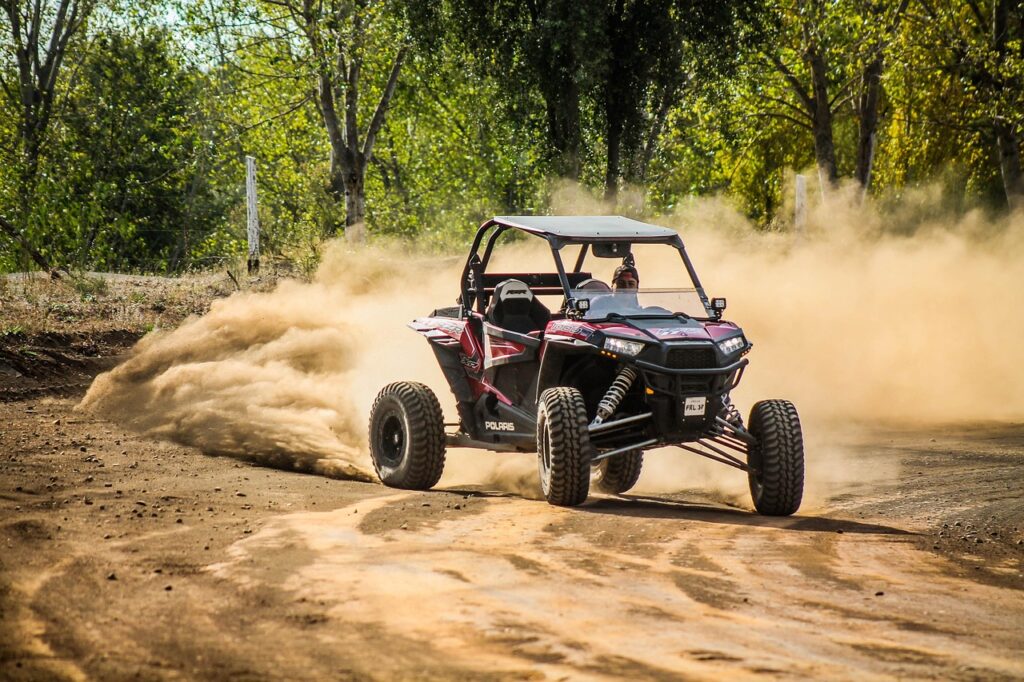Its OHVs vs. 4x4s – The off-road world is changing fast. Side-by-sides (SxS/UTVs) have exploded in popularity, and land managers, rental fleets, and off-road parks are adapting to meet that demand. But there’s a downside: full-size 4×4 drivers—Jeeps, trucks, and expedition rigs—are finding fewer trails built with them in mind.
This shift has sparked tension between OHV riders and the 4×4 overlanding crowd. Trails are getting narrower, parks are becoming OHV-centric, and many Jeepers are questioning whether classic destinations are worth the trip anymore.
Here’s a closer look at what’s happening, real-world examples where Jeepers feel the squeeze, and why the future can still be positive if we focus on sharing and restoring access.
Trail Design & Accessibility
SxSs are smaller, lighter, and more nimble. That makes them fun, but it also means new trails are being cut for their dimensions—tight switchbacks, narrow passes, and obstacles sized for 64-inch rigs, not 75-inch Jeeps.
- Uwharrie National Forest (North Carolina): Once a Jeep favorite, many trails here have been reshaped with OHVs in mind. For full-size rigs, it’s more of a frustrating squeeze than a fun adventure. Learn more about Uwharrie OHV trails (fs.usda.gov).
Trail Congestion & Use Conflicts
The character of many trails has shifted from slow, scenic exploration to high-volume, high-speed OHV traffic. This can be intimidating for Jeepers and frustrating when the goal is quiet overland travel.
- Moab, Utah: World-class Jeep trails like Hell’s Revenge and Fins & Things are now crowded with SxS rentals. The energy is exciting, but the sheer volume changes the trail experience—and not always for the better.
- Hatfield-McCoy Trails (West Virginia): Marketed as multi-use, most of the system is practically off-limits for full-size rigs. Helmets are required (yes even for full-size 4×4). Jeepers and other full-size drivers often leave feeling like it wasn’t worth the trip or the access fee. Explore Hatfield-McCoy official trail maps (trailsheaven.com).
Market Shift & Amenities
Off-road parks and rental businesses are chasing the SxS boom. That means facilities are designed for trailered OHVs—big staging lots, wash-down bays, and camping designed for toy haulers—not necessarily for Jeepers who want to drive in, camp, and explore.
- Windrock Park (Tennessee): Massive mileage and epic terrain, but Jeepers often feel like second-class citizens. Trail signage, width, and the general atmosphere tilt hard toward OHVs. Check out Windrock Park trail maps (windrockpark.com).
The Way Forward
Even with frustrations building, the future of trail access doesn’t have to be divided. The off-road community has always been broad, and we’re strongest when we work together.
- Trail Sharing & Balance: Advocacy groups and clubs must push for inclusive design, ensuring trails are cut and maintained wide enough for 4x4s.
- Maintenance & Restoration: Reclaiming overgrown trails and widening eroded routes keeps full-size rigs in the game.
- Industry Dialogue: Land managers and manufacturers need to balance the booming OHV market with the growing overlanding movement. Both matter.
Bottom Line
The OHV boom has changed off-roading—and not always for the better if you’re a Jeeper. Trails are narrower, crowds are bigger, and some destinations feel like they’ve left 4x4s behind.
But it’s not the end of the road. With better maintenance, advocacy, and cooperation, the off-road world can support Jeeps, SxSs, and everything in between.
At the end of the day, whether you’re behind the wheel of a Gladiator or strapped into a RZR, we all want the same thing: access, adventure, and a future where trails stay open.
Tread Lightly (treadlightly.org) and Gladiator Up! – Doug

